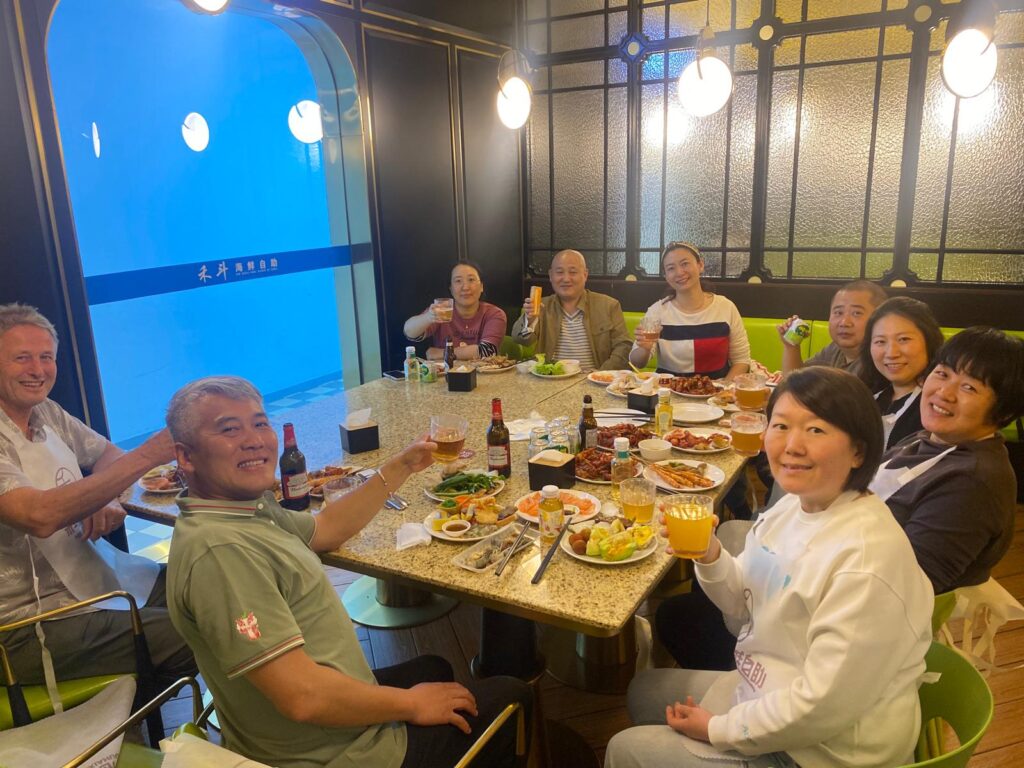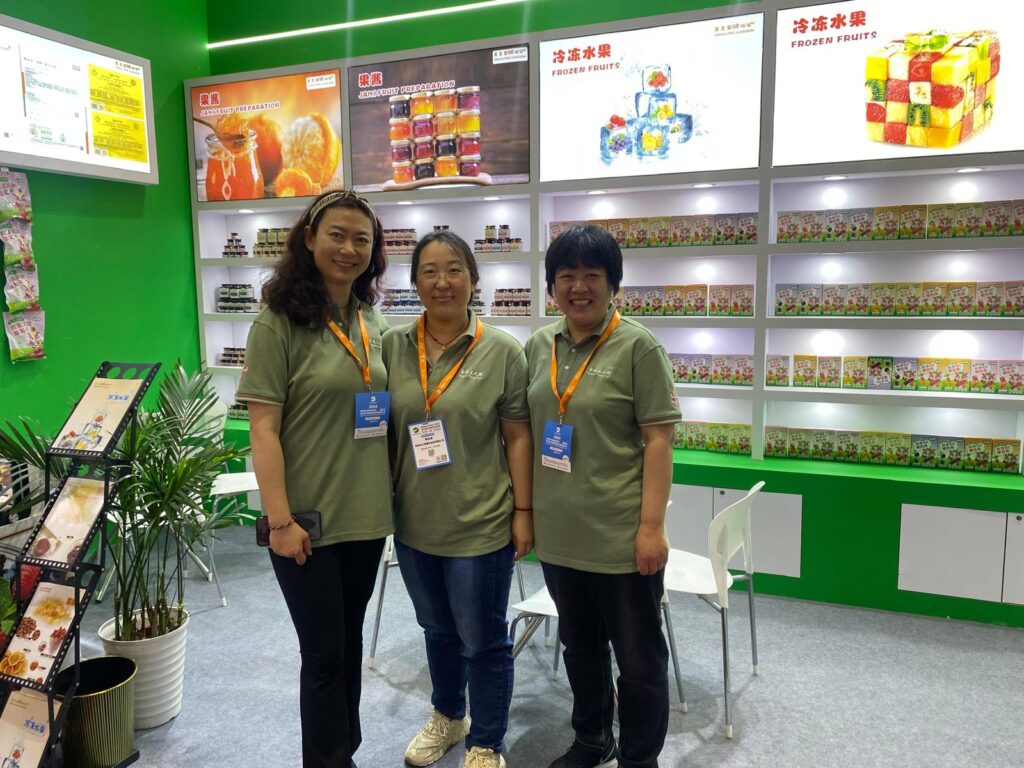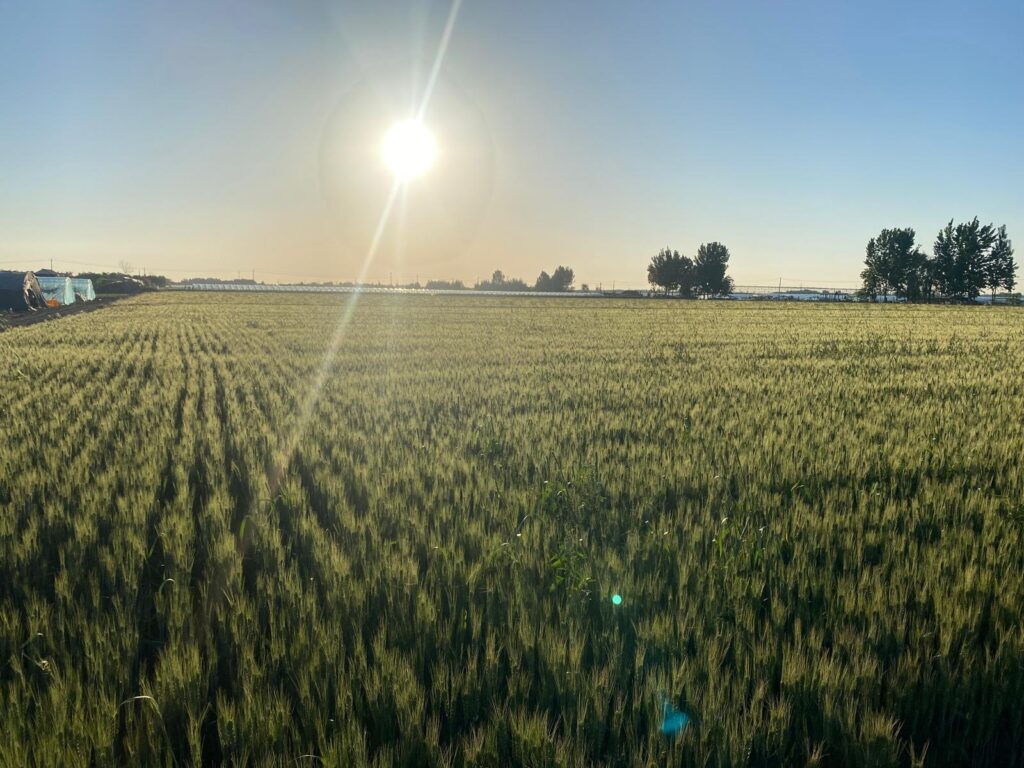Recently I had the opportunity to embark on a fascinating work trip to China, where I visited our joint venture’s growing and processing operation near the coastal city of Qingdao, in Shandong province. Along with several business meetings we visited a plant tissue culture lab, an electric truck depot, met with local government, and visited China’s largest Bakery fair in Shanghai. More on those some other time, for now I’ll just give my first impressions.
This trip offered a deep dive into the nuances of conducting business in China, revealing both the historical richness of the region and the distinctive business practices that set it apart from the Western world. If I had to use one word to describe China, it would be SCALE – all in caps. The vastness of the country, the huge population, the scale of the infrastructure and the scale of industry are quite hard to comprehend until seen firsthand.
Qingdao
Qingdao, where we spent most of our time, is a bustling port city and boasts a unique historical tapestry. In the late 19th century, Germany occupied Qingdao and transformed it into a significant naval base and colonial outpost. This period of German influence is still evident today in Qingdao’s European architecture, beer culture—epitomised by the world-renowned Tsingtao Brewery—and the city’s planning. The German legacy and subsequent Japanese occupation have left an indelible mark, making Qingdao a city in which East meets West in intriguing ways.
By Chinese standards Qingdao is a tier 2 city, comparable in population to London, yet it feels much larger. The swathes of high-rise buildings, often built in identical clusters, are the result of the real estate boom. Construction companies have been building speculatively on a silly scale, leading to the phenomenon of ‘ghost’ buildings on the outskirts of town. Despite the resulting slowdown in construction, the sheer scale of development is evident everywhere. The Chinese government’s long-term perspective, coupled with GDP growth that is still leagues ahead of many countries, suggests that the over availability of cheap housing stock is not as problematic as it might seem. The loosening of the one-child policy is likely to lead to an increase in population, which will eventually absorb this housing.
Sea fog rolling in to Qingdao downtown
Qingdao old town
Navigating the Urban Jungle
I’m glad I wasn’t doing the driving. Whilst not as chaotic as Latin America (Colombia left me sweaty), the sheer volume of traffic is overwhelming. I’m also set in my ways that driving on the left, as in the UK, New Zealand, and Australia, makes the most sense! In Qingdao I would suggest that close to a third of cars were electric. The city road infrastructure, especially in Shanghai, is incredible, with extensive overpasses and bridges. The quality of the road surfaces puts tired British infrastructure to shame. Twenty years ago, a dirt road led to our countryside factory; now it’s pristine asphalt. However, navigating these roads with the Chinese equivalent of Google Maps is headache inducing due to its high-pitched, incessant anime-style voice. The user interface, however, is very cool, resembling something out of TRON. Drunk driving used to be something of a problem in China, but thankfully it’s less so now, and it’s common to see chaps on miniature fold-up motorcycles driving swaying individuals back home in their own car, their bikes stowed in the back.
Development and Modernisation
China is often viewed as a developing nation, but this perception is outdated when considering the cities, which have, in some areas, surpassed those in the West. However, a significant portion of the rural population lives in what might be considered poverty but is perhaps better described as a simple country life. These individuals are encouraged to move into cheap real estate on the outskirts of cities, but many prefer to continue their traditional lifestyle; it is, after all, the life they know. The younger generation, on the other hand, are driven by ambitious parents toward tertiary education and numerous extracurricular activities, mirroring trends in the West.
Contrary to some preconceptions, Chinese cities are remarkably clean. While China remains the biggest consumer of coal, significant strides have been made in reducing pollution. Our factory has transitioned to biomass energy, reflecting broader national efforts towards cleaner energy. This summer we are installing solar panels at our factory, which should supply 80% of our energy requirement – we’ll update you once this is done.
Our managing director, David, has witnessed China’s transformation over the past 25 years, with developments in infrastructure that are hard to match. While projects like the UK’s HS2 and Anglesey’s Wylfa 2 nuclear power station languish, China has built entire cities, dams, and high-speed railways. Our joint venture has similarly progressed through the philosophy of Kaizen (Japanese), or continuous improvement.


Conducting Business
Business meetings in China often take place over elaborate banquets, highlighting the importance of relationship-building. Unlike the transactional nature of Western business interactions, Chinese practices emphasise long-term relationships and trust. Geert Hofstede’s cultural dimensions theory explains these differences well. China’s high score on long-term orientation reflects values of perseverance, thrift, and adaptability. This approach is crucial in agriculture which is subject to the temperament of mother nature. Supporting farmers through difficult seasons is essential for sustained partnerships.
Collectivism is another key difference, with the group’s needs taking precedence over individual achievements. This fosters loyalty and duty within companies and toward business partners, reinforcing harmonious relationships and teamwork. A fundamental concept in Chinese business culture is guanxi, the network of relationships involving mutual obligations. Building guanxi requires patience, respect, and genuine effort to integrate into the local culture. Our banquets were not just meals but essential events for nurturing these vital relationships. Each shared toast, of which there are many, and each gesture of goodwill contribute to strengthening business ties and laying the groundwork for future cooperation.
Looking to the Future
China faces an interesting future. Many young people, educated at top Western universities, are likely to return home, driven by familial and cultural ties. This generation may push for more freedoms, compelling the CCP to adapt, and given their long-term view and collectivist priority for harmony, it will likely adapt. Balancing individual freedoms with collective cohesion and efficiency will be a significant challenge, but the Chinese respect for technocrats might facilitate this transition.
Whilst I appreciate living in a Western country, I hope that East and West can work together to address global challenges. I look forward to my next visit to China, confident that it will have scaled up even more by October.
Strawberries on Canterbury block
Orchestra playing in Qingdao bay
The view away from Shanghai downtown
Qingdao naval museum

